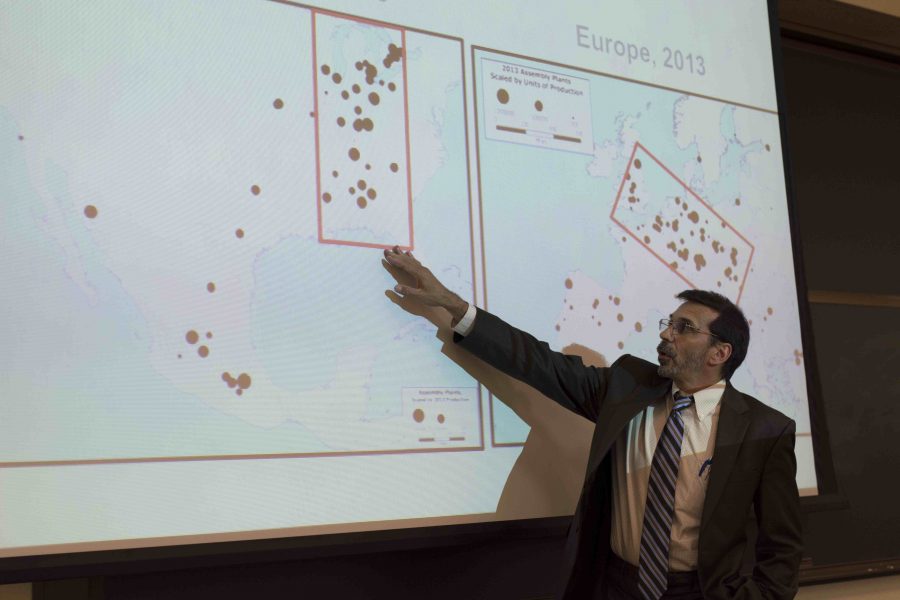Chicago Fed economist reflects on cross-continental auto industry
Thomas Klier discusses U.S. and European auto industries, past and present
May 4, 2016
A Chicago Federal Reserve economist revived the joint Washington and Lee and Virginia Military Institute seminar series last week with a talk about the international auto industry.
Thomas Klier is a senior economist and research advisor in the economic research department at the Federal Reserve Bank of Chicago. He specializes in research on the auto industry and gave the talk entitled, “Economic Geography in the New Auto Industry,” on April 28.
Klier discussed the apparent similarity between Europe’s auto-assembly footprint and North America’s.
W&L Professor of Economics Mike Smitka said the auto industry is extremely important in global spaces.
“Everyone knows what a car is, so people care a lot about the industry,” Smitka said. “It is also a global industry in a way that many other industries are not. Many companies are taking operation in multiple countries…different parts of cars can be made by hundreds of countries.”
Klier said 1980 marked a big transformation in the North American auto industry. Prior to 1980, increased demand for automobiles led to the establishment of branch assembly plants throughout the continent. However, in 1980, Detroit carmakers abandoned this branch plant system and foreign-based carmakers entered the scene, Klier said.
The joint W&L and VMI seminar series invites visitors to discuss a variety of topics in the Economics Department to both students from these universities and community members. The series began in 2009.
“Washington and Lee and VMI have a long and sophisticated history,” Smitka said. “The W&L/VMI Seminar Series provides great opportunities for two schools to discuss important issues and exchange ideas with each other.”
Klier said prior to 1990, Western Europe dominated the auto industry. But when over a dozen countries joined the European Union in the early 1990s, he said, economic space opened up and offered additional options for auto production.
The arrival and quick growth of Japanese auto producers brought competitive challenges for European production, Klier said. This led to a shift in auto production from Western to Eastern Europe.
But today, the auto industry is working much differently than it was in the 1990s, and the production of automobiles exhibits agglomeration in both Europe and North America, Klier said. In North America, the important factors are proximity to market and inputs, and transportation infrastructure and opportunities.
Previous speakers in the W&L and VMI seminar series include Bill Johnson from the University of Virginia, Daniel Berkowitz from the University of Pittsburgh and W&L Professor of History Nicolaas Rupke.




